BIOANG: Leader in Sustainable Bioeconomy Solutions
Vision Statement
To lead the global shift towards a sustainable and circular bioeconomy, transforming agricultural waste into valuable resources and fostering a low-carbon, resilient future for both communities and the planet.
Goals and Objectives
To revolutionize agriculture in the USA, Canada and Mexico by transforming biomass into high-value biobased products and bioenergy, enhancing sustainability and economic viability in the agricultural sector.
We are BIOANG
BIOANG is already a thriving business in food systems environment, since 1979 we have served dozens of companies who want to optimize its value chain.
SOLUTIONS THAT MAKE A DIFFERENCE
Why Choose BIOANG for Bioeconomy Consulting?
Biomass feedstock management
- Optimizing Conversion Technologies: Improve biomass-to-biofuel processes by adopting new technologies, automation, or reorganizing workflows for greater efficiency.
- Data-Driven Decision-Making: Use data and analytics to monitor performance, guiding informed decisions and continuous improvements.
Biobased products and bioenergy consulting
- Feasibility Studies and Engineering Development: Investigate and develop new products from agricultural residues, including chemicals, agricultural inputs, energy, food additives, and biodegradable materials.
Renewable Energy Consulting
- Biogas and Biomass Energy Projects: Design and develop renewable energy projects from agricultural biomass, including biogas, biomass boilers, gasification, and the installation of biodigesters.
Life Cycle Analysis and Sustainability
- Life Cycle Assessment (LCA): A method to evaluate and minimize the environmental impact of agricultural processes and their by-products throughout their entire life cycle.
- Carbon Footprint Reduction Consulting: Expert guidance to adopt practices that lower the carbon footprint of farms, enhancing their sustainability and eco-efficiency.
Innovation and Technological Development R&D
- Industrial Symbiosis & New Production: Foster connections between sectors and companies to introduce biobased products to the market.
- Pilot Programs: Develop and manage real-world pilot programs to test new agricultural technologies and practices.
- R&D: Oversee product and process development through TRL stages 1 to 7.
Innovation in Action: Our Success Stories
BIOANG’s Expertise in Bioeconomy Consulting and Renewable Energy
Mango Waste to Pharma-Cosmetic and Food Products
Services Provided:
- Research and development of a biorefinery to utilize mango residues (peels, pulp, and seeds).
- Technology maturation from TRL1 to TRL5 in a pilot industrial plant.
- Technical and commercial validation of products such as:
- Mangiferin Nutraceutic: Powerful antioxidant.
- Mangiferin Cosmetic: Anti-aging cream.
- Mango Pectin Gummies: Food products.
- Detailed engineering development for the pilot plant.
- Project design and patent development for extraction processes.

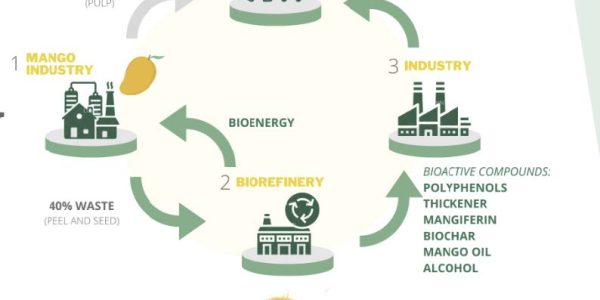
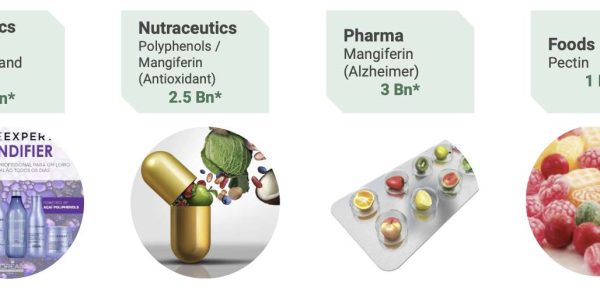
Results:
This project established an innovative biorefinery, positioning mango-derived products in pharmaceutical, cosmetic, and food markets, while promoting circular economy practices.

Broccoli, Corn, and Cattle Waste to Biogas
Services Provided:
- Feasibility analysis for adopting biodigesters to convert broccoli, corn, and cattle manure waste into biogas.
- Selection of suitable technologies and project design.
- Coordination with technology companies to implement effective solutions.
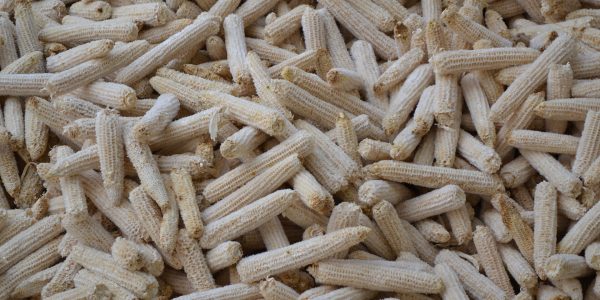
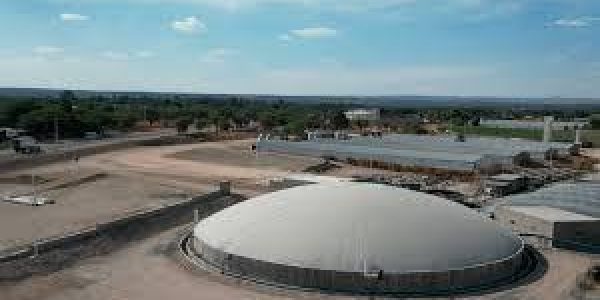
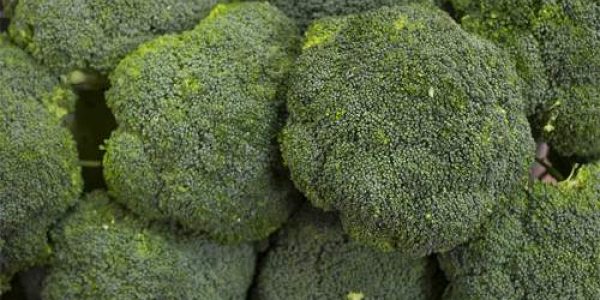
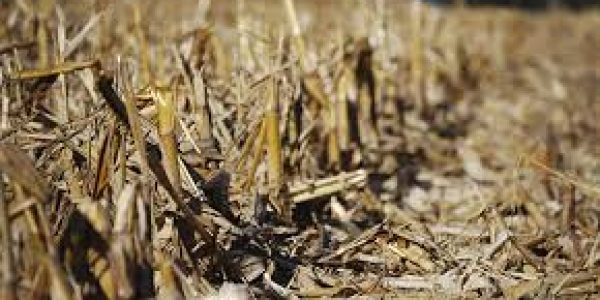
Results:
The project enabled the use of agricultural and livestock waste to produce biogas, promoting the transition to renewable energy sources.

Shellnuts to Biochar and Carbon Credits
Services Provided:
- Development of a project for biochar production from shellnuts, aimed at soil regeneration and carbon credit sales (CRM tickets).
- Coordination and management of the project, including its design and development.
- Certification acquisition for the use and commercialization of biochar.
- Application strategy to maximize economic and environmental benefits.
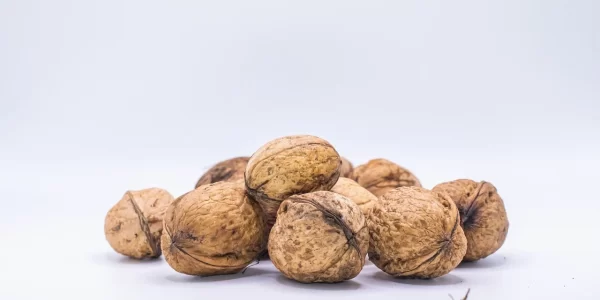
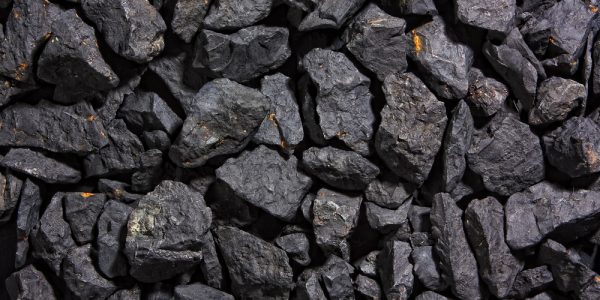
Results:
The project showcased how agricultural waste can be transformed into a valuable resource for soil improvement and additional income through carbon credit sales.

Biomass Waste to Hydrogen and Biochar
Services Provided:
- Collaboration on an R&D project in Europe for hydrogen production through gasification of residual biomass, such as olive pits.
- Project design for industrial pilot production.
- Techno-economic comparative study against other technologies.
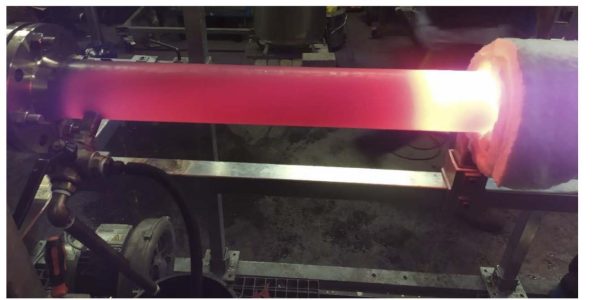
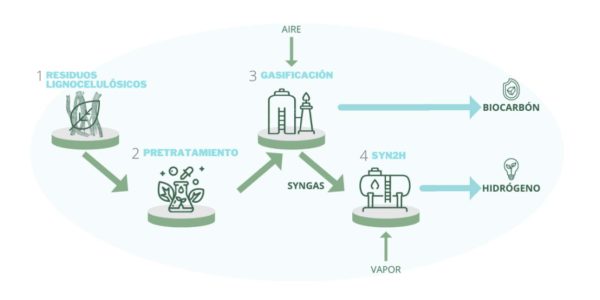
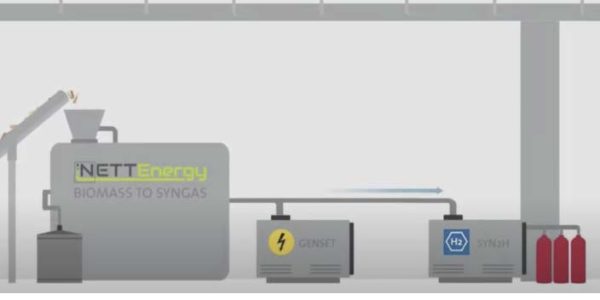
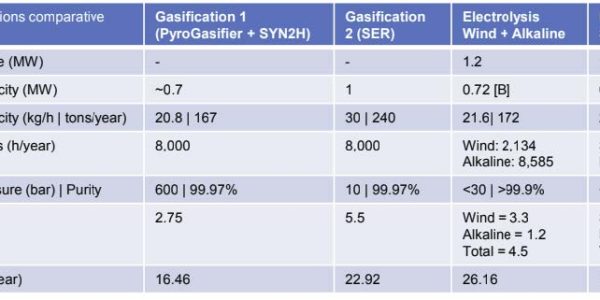
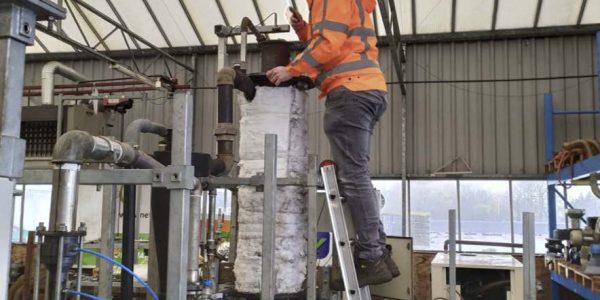
Results:
The project validated the feasibility of hydrogen production from biomass sources, contributing to the development of clean technologies.

Pineapple Waste to Textile Fibers
Services Provided:
- Initial assessment to identify opportunities and design the project.
- Research, development, and technological validation from TRL1 to TRL5.
- Detailed engineering for the production of long fibers for thread and synthetic leather.
- Technical and commercial validation of derived products.
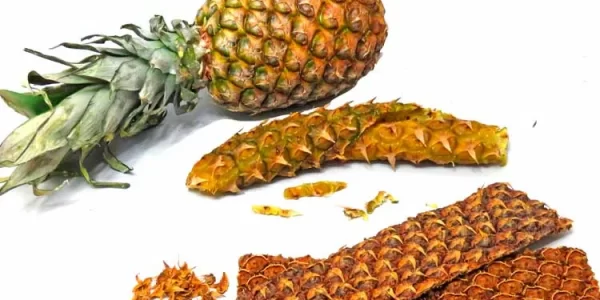
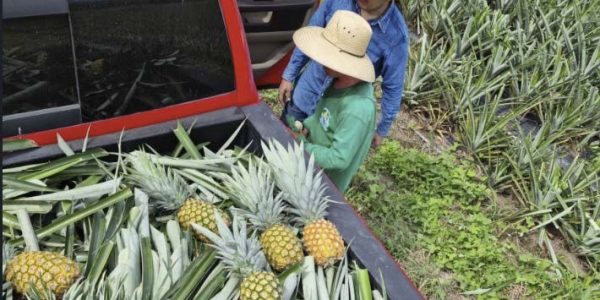
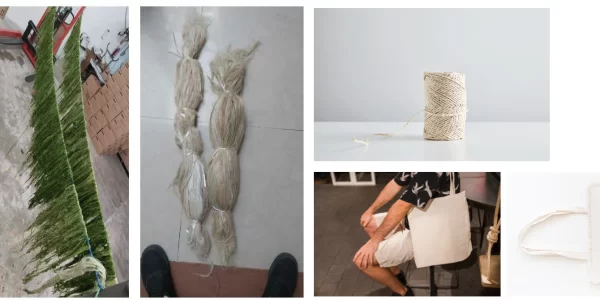
Results:
Pineapple waste, including leaves and crowns, was successfully transformed into high-quality textile fibers, enabling their use in sustainable fashion and materials industries.

Wood Biomass to Bioasphalt and Biochar
- Research and development for bioasphalt production using sawmill wood residues.
- Technical and economic validation of bioasphalt in collaboration with specialized laboratories.
- Financial feasibility study with techno-economic analysis of the process and production chain.
- Project design and creation of the production chain.
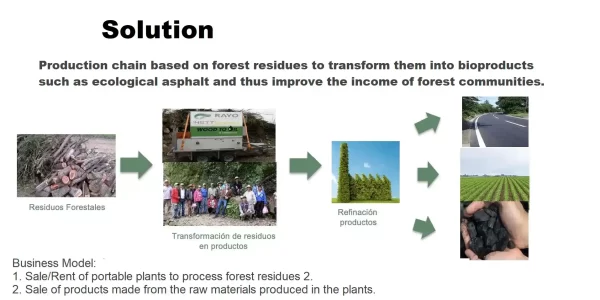
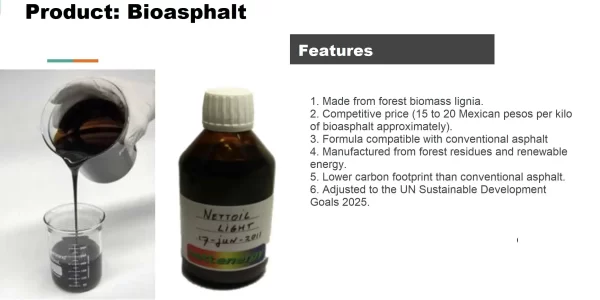
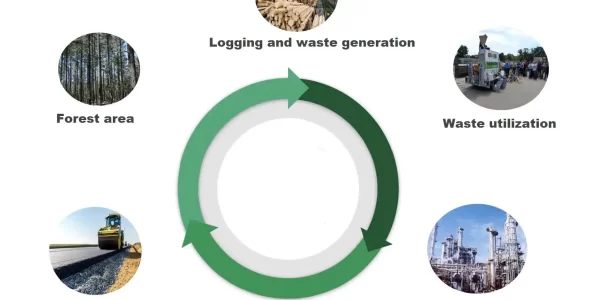
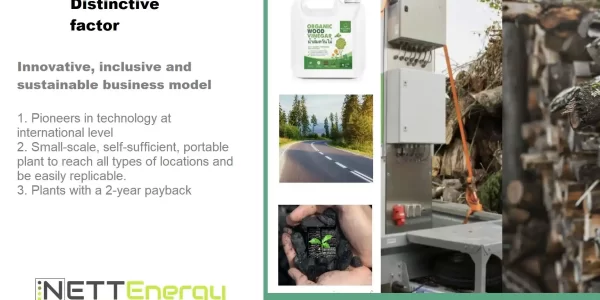
Results:
The project successfully demonstrated the potential to convert wood residues into high-value products such as bioasphalt, validating both its technical and economic feasibility with a sustainable approach.

Bioeconomy Master Class in Peru
Services Provided:
- Design and delivery of a specialized course on bioeconomy for a training company in Peru.
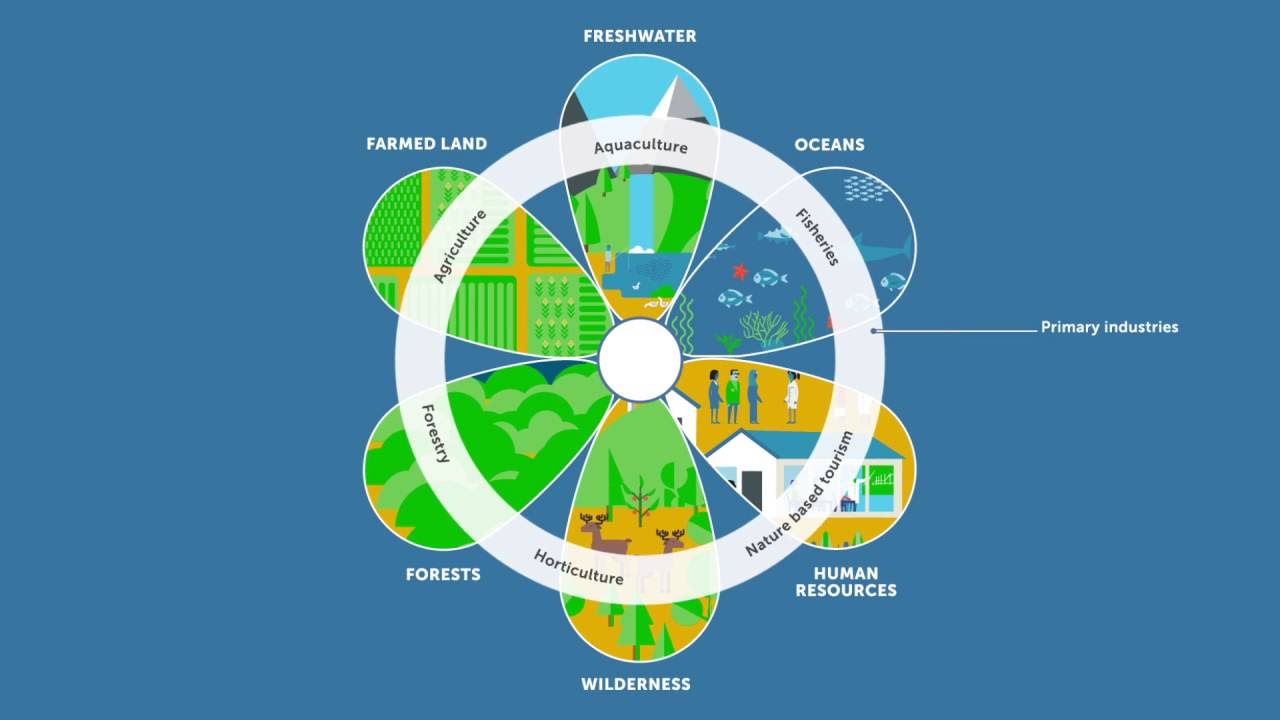
Results:
The course enhanced bioeconomy knowledge in the sector, promoting innovation and sustainable development.

Bioenergy Course for a U.S. Training Platform
Services Provided:
- Development of an online course on bioenergy tailored to a specialized training platform.
- Technical review by experts from the U.S. Department of Energy.
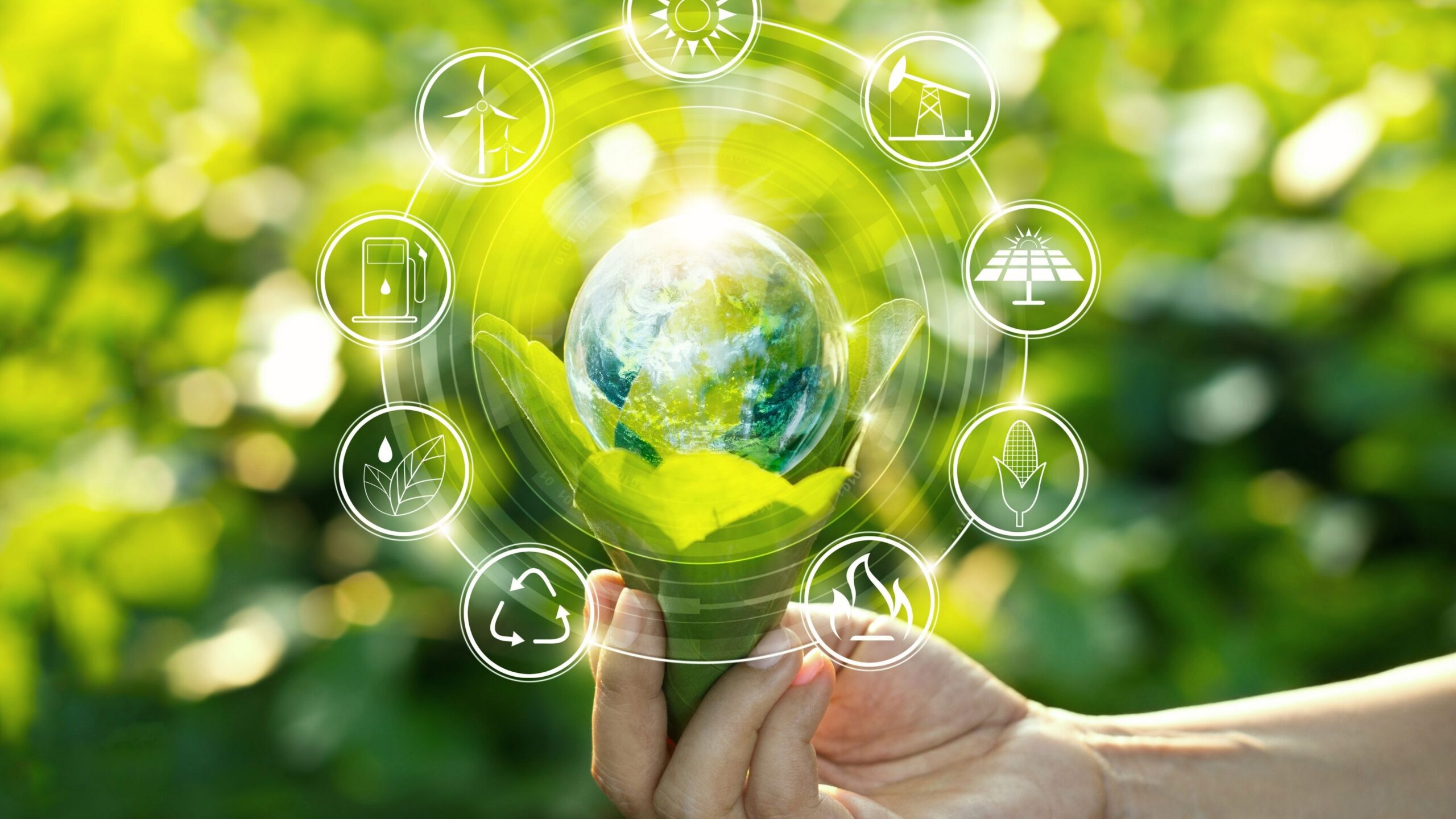
Results:
The course was successfully implemented, training professionals in bioenergy and promoting the use of renewable resources.

Tequila Waste to Biofertilizers and Biochar
Services Provided:
- Initial assessment to identify opportunities, analyze the current situation, and design the project.
- Development and adoption of technology for vinasse treatment.
- Technological coordination, supplier identification, and detailed engineering development.
- Creation of a productive chain strategy for derived products.
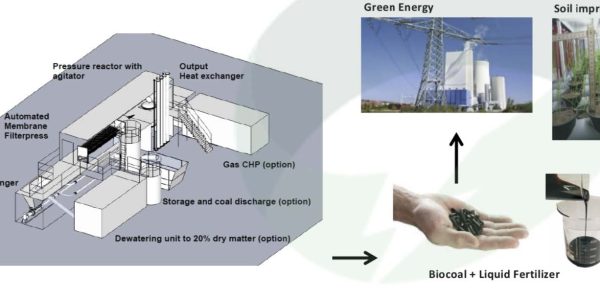
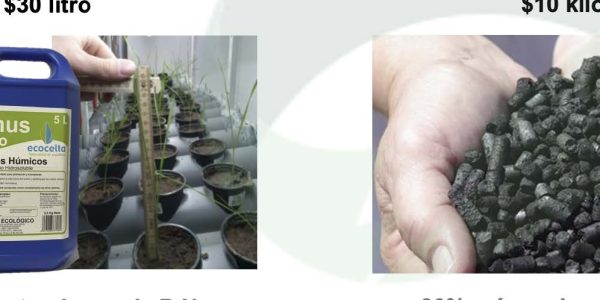
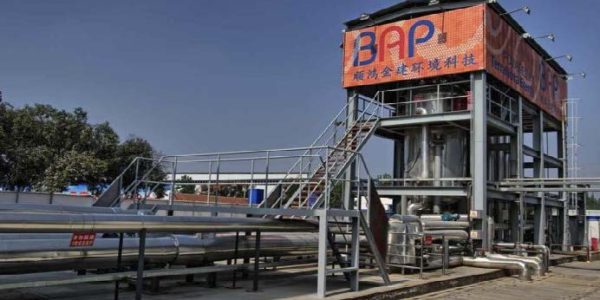
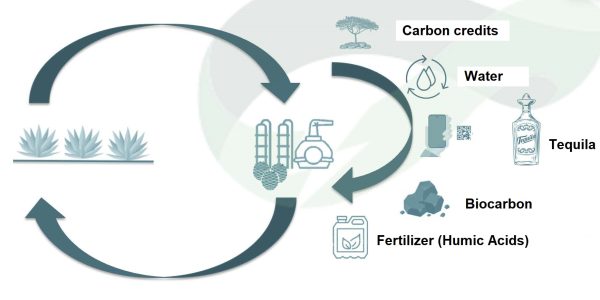
Results:
A model was developed to utilize vinasse by converting it into biofertilizers and biochar, adding value to waste from the tequila industry.

Mango Waste to Wound Care Dressings
Services Provided:
- Development of a go-to-market strategy, commercialization channels, and scaling production to an industrial pilot level.


Results:
The process successfully converted mango waste into innovative medical products, promoting a circular economy and sustainable material usage.

Biomass to Boiler Conversion
Services Provided:
- Initial assessment to identify improvement opportunities and analyze the current situation.
- Project design for replacing a fuel oil boiler with a biomass boiler using the company’s own waste.
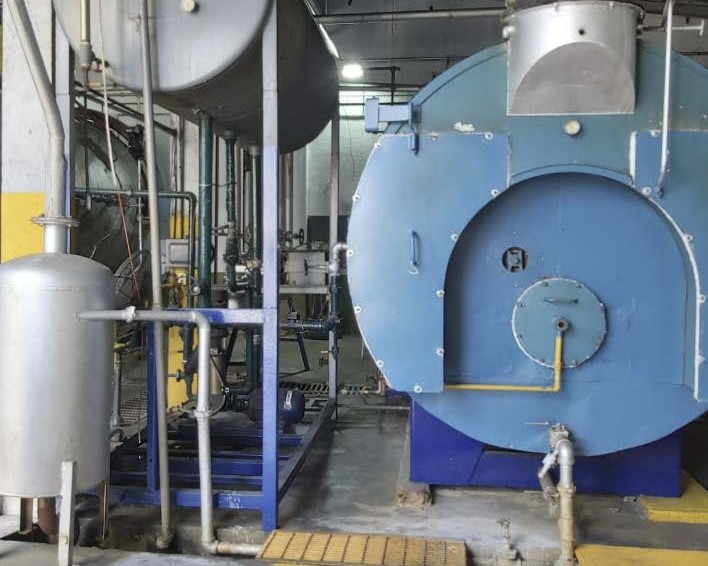
Results:
The boiler replacement resulted in operational savings of up to $1M USD annually, while significantly reducing the environmental impact of operations.

Transforming agriculture and industry towards a better future planet society
We collaborate with
Growers
Public Institutions
Private Institutions
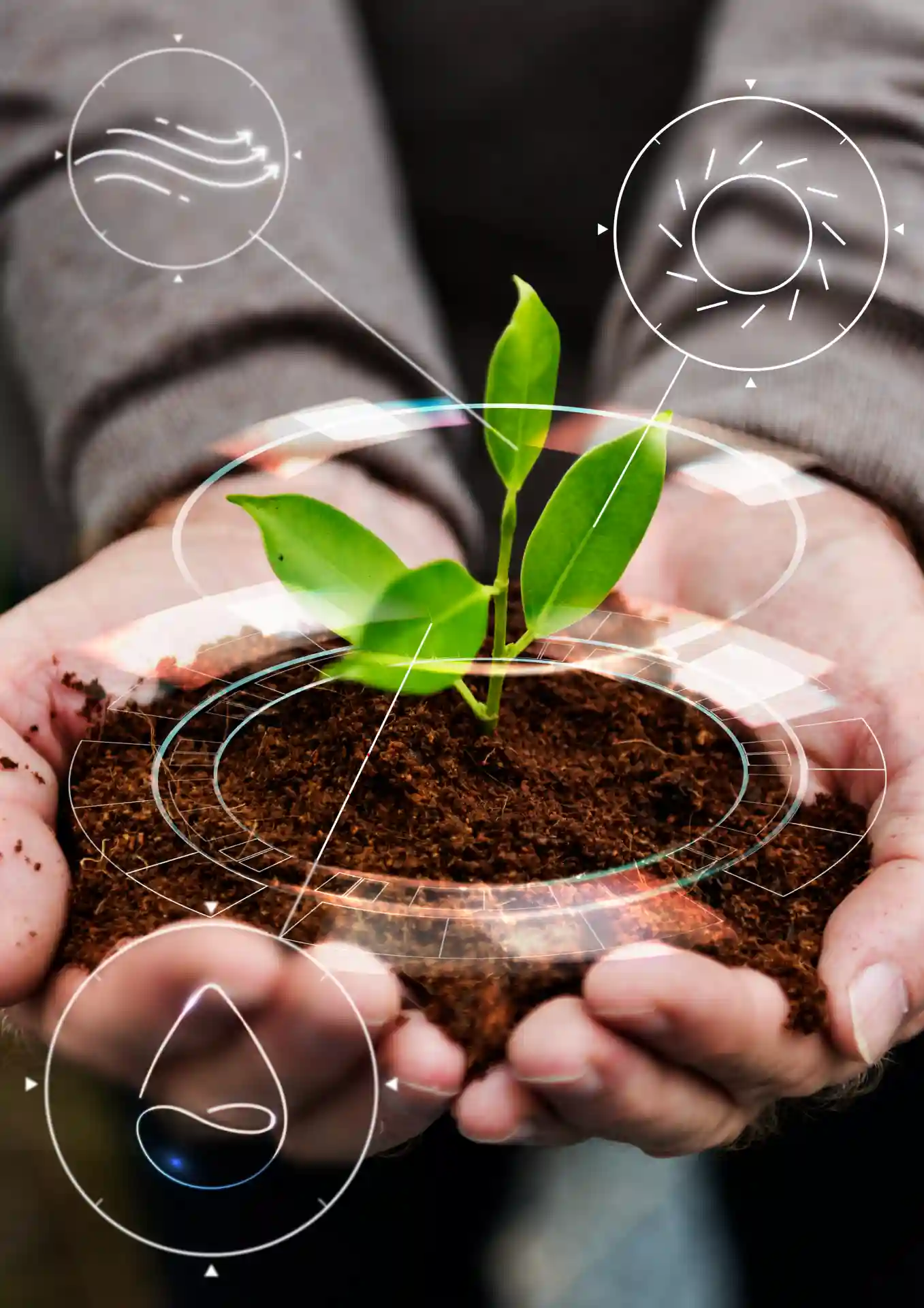
Advancing Sustainability Through Bioeconomy Consulting Solutions
The bioeconomy uses biological resources to produce sustainable goods, addressing climate change and resource scarcity. It converts biomass into biofuels and bioplastics, reducing fossil fuel use and supporting a circular economy.
APLICATIONS
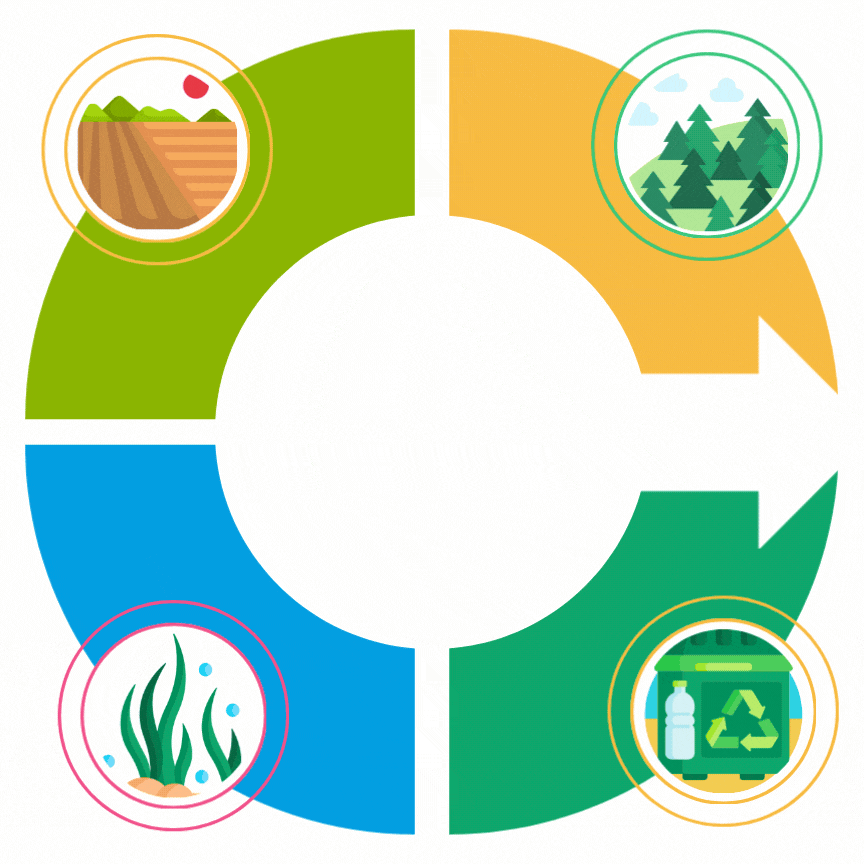


How to advance the SGD’s with the bioeconomy







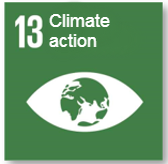


Agricultural bioeconomy principles
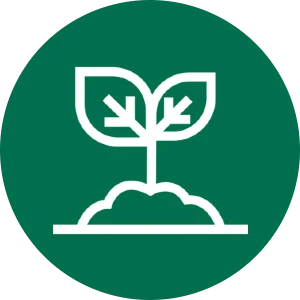
Environmental care
Promote projects based on bioeconomy that avoid affecting the environment, from polluting actions, deforestation and loss of biodiversity.

Knowledge and innovation
Generation and use of ancestral, scientific and innovative knowledge.
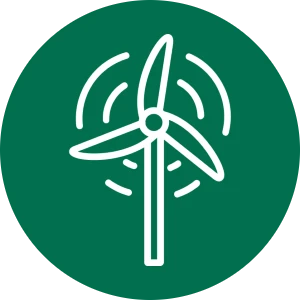
Biodiversity and sustainability
Sustainable use of biodiversity in bioeconomy projects

Rural and social development
Promote the economic and social development of rural communities through job creation, infrastructure improvement and the provision of basic services.


Added value
Adding value to products or waste derived from agriculture or agribusiness.

Territoriality
Contemplate the differences of each territory and the customs of this one.

Circularity
Integral and efficient use of inputs and resources used, including their waste.

Productive partnership
Increase production in each link of the production chain.

Environmental care
Promote projects based on bioeconomy that avoid affecting the environment, from polluting actions, deforestation and loss of biodiversity.

Knowledge and innovation
Generation and use of ancestral, scientific and innovative knowledge.

Biodiversity and sustainability
Sustainable use of biodiversity in bioeconomy projects

Rural and social development
Promote the economic and social development of rural communities through job creation, infrastructure improvement and the provision of basic services.


Added value
Adding value to products or waste derived from agriculture or agribusiness.

Territoriality
Contemplate the differences of each territory and the customs of this one.

Circularity
Integral and efficient use of inputs and resources used, including their waste.

Productive partnership
Increase production in each link of the production chain.
Use case of Central Valley of California
How BIOANG Provides Effective Bioeconomy Consulting Services
The Central Valley of California is one of the world’s most productive agricultural regions, known for its diverse crops and significant agricultural output.
ALMONDS
- Production: California produces more than 80% of the world’s almonds, with the majority of production concentrated in the Central Valley. In 2021, approximately 1.33 million acres were dedicated to almond cultivation, yielding nearly 3 billion pounds (1.36 million tonnes) of almonds.
- Waste Generated: Almond shells, hulls, and pruning residues. These can be used as biomass for energy generation or as material for composting.
GRAPES
- Production: California is the largest grape producer in the U.S., with over 800,000 acres dedicated to vineyards, primarily in the Central Valley. In 2021, about 7.2 million tonnes of grapes were produced, with a large portion used for wine production.
- Waste Generated: Pruning canes, grape pomace (skins and seeds), and fermentation residues. Grape pomace can be used in biofuel production or as soil amendments.
TOMATOES
- Production: The Central Valley accounts for more than 90% of the processed tomatoes in the U.S. In 2021, around 12.6 million tonnes of tomatoes were produced in this region.
- Waste Generated: Tomato residues such as stems, leaves, and skins, which can be processed into biogas or used as compost additives.
ALFALFA
- Production: Alfalfa is an important forage crop in the Central Valley, with more than 800,000 acres dedicated to its cultivation. The annual production is approximately 7 million tonnes.
- Waste Generated: Harvest residues and unused biomass, which can be converted into biogas or used to produce biomass pellets.
LETTUCE
- Production: Although the Central Valley is not as well known for lettuce production as the Central Coast, it still contributes significantly with over 120,000 acres cultivated annually.
- Waste Generated: Outer leaves, stems, and non-marketable residues, useful for compost production or biogas generation.
ORANGES
- Production: Orange production in the Central Valley represents a significant portion of California’s citrus production, with approximately 135,000 acres cultivated and an annual yield of over 2 million tonnes.
- Waste Generated: Peels, pulp, and pruning residues, which can be used in the production of bioproducts such as pectins and essential oils.
ALMONDS
- Production: California produces more than 80% of the world’s almonds, with the majority of production concentrated in the Central Valley. In 2021, approximately 1.33 million acres were dedicated to almond cultivation, yielding nearly 3 billion pounds (1.36 million tonnes) of almonds.
- Waste Generated: Almond shells, hulls, and pruning residues. These can be used as biomass for energy generation or as material for composting.
GRAPES
- Production: California is the largest grape producer in the U.S., with over 800,000 acres dedicated to vineyards, primarily in the Central Valley. In 2021, about 7.2 million tonnes of grapes were produced, with a large portion used for wine production.
- Waste Generated: Pruning canes, grape pomace (skins and seeds), and fermentation residues. Grape pomace can be used in biofuel production or as soil amendments.
TOMATOES
- Production: The Central Valley accounts for more than 90% of the processed tomatoes in the U.S. In 2021, around 12.6 million tonnes of tomatoes were produced in this region.
- Waste Generated: Tomato residues such as stems, leaves, and skins, which can be processed into biogas or used as compost additives.
ALFALFA
- Production: Alfalfa is an important forage crop in the Central Valley, with more than 800,000 acres dedicated to its cultivation. The annual production is approximately 7 million tonnes.
- Waste Generated: Harvest residues and unused biomass, which can be converted into biogas or used to produce biomass pellets.
LETTUCE
- Production: Although the Central Valley is not as well known for lettuce production as the Central Coast, it still contributes significantly with over 120,000 acres cultivated annually.
- Waste Generated: Outer leaves, stems, and non-marketable residues, useful for compost production or biogas generation.
ORANGES
- Production: Orange production in the Central Valley represents a significant portion of California’s citrus production, with approximately 135,000 acres cultivated and an annual yield of over 2 million tonnes.
- Waste Generated: Peels, pulp, and pruning residues, which can be used in the production of bioproducts such as pectins and essential oils.
MEET OUR TEAM
Bioeconomy Consulting for Biomass Optimization

Since 2009, he has focused on technological agribusiness in Mexico as director of ANG. Co-founder of the Mexican Agri-Biotechnology Council, he is an expert in bioeconomics and livestock production, and has spoken at international events such as the Atlanta Poultry Expo on agricultural technology and social responsibility.

Enrique led the New Vision for Agriculture, seeking to align agricultural stakeholders with the UN Sustainable Development Goals. He has held key positions in Agribusiness at Grupo Bimbo and in new businesses at Grupo Altex.

Sergio is an influential bioeconomy expert in Mexico and North America, leading the transition to circular agriculture. He has contributed to the creation of biorefineries, biochar production and biomass utilization. He is also the founder of Rayo Bioenergía, the first Mexican startup specialized in bioeconomy intelligence.
